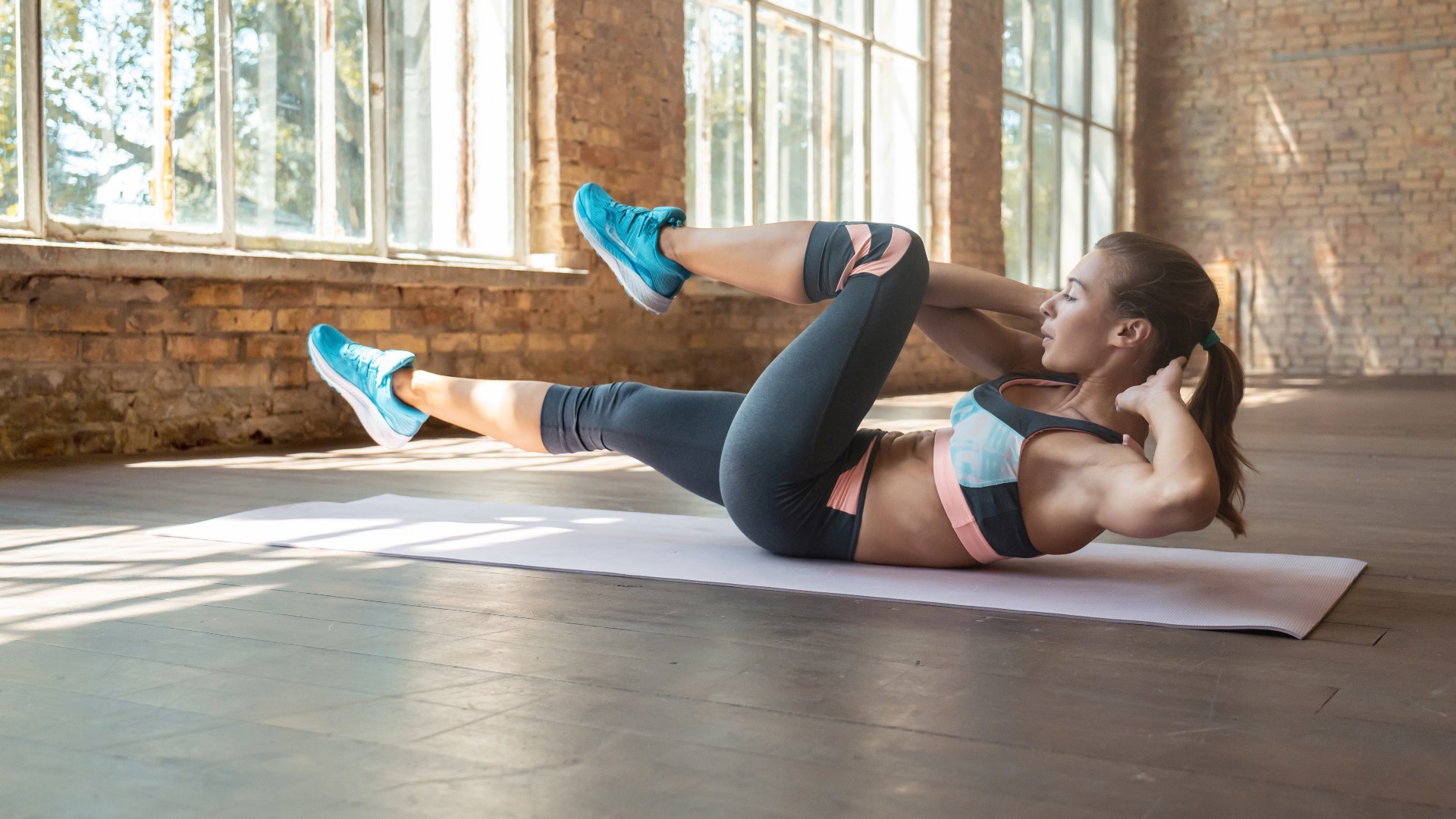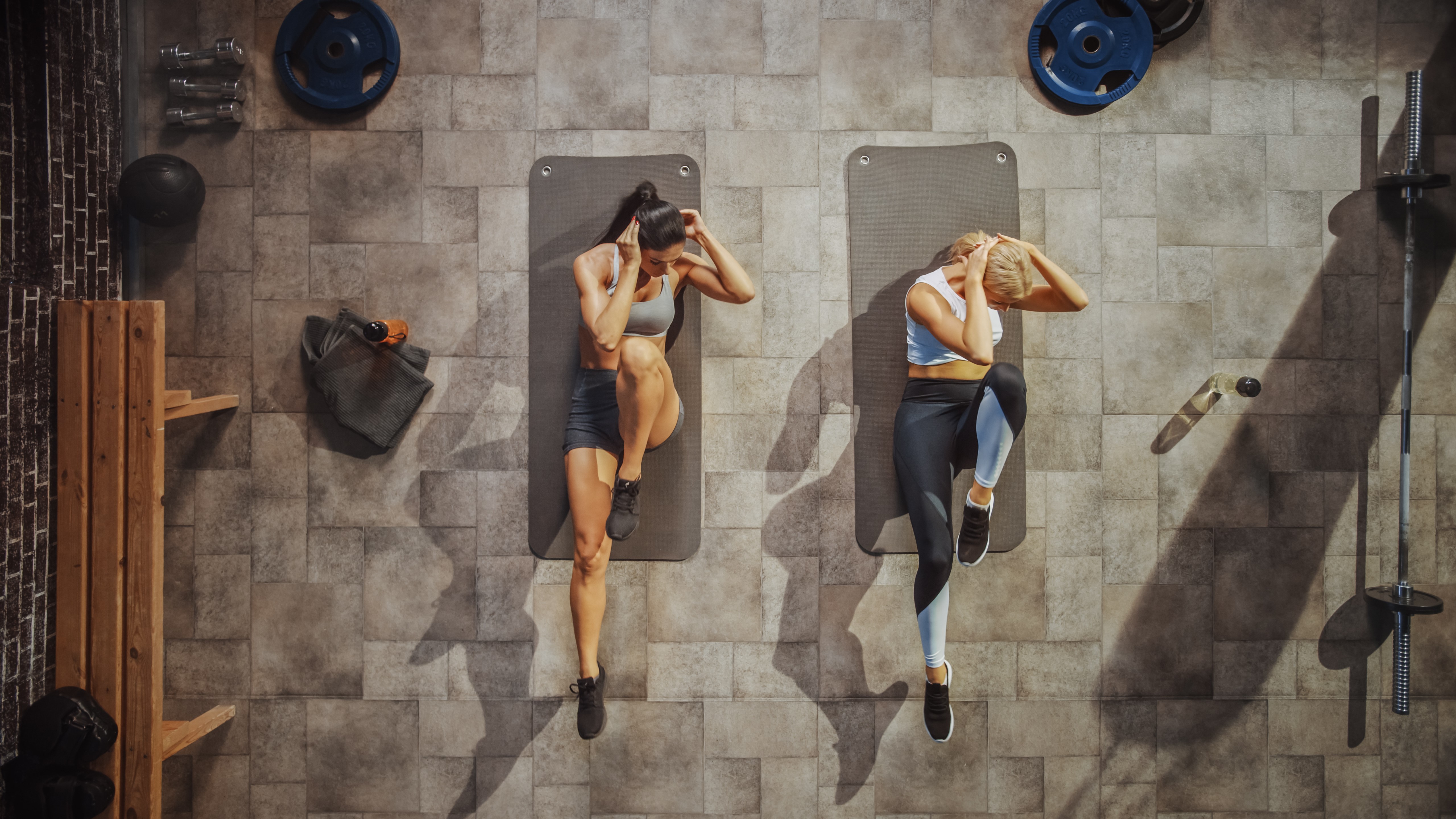How to do bicycle crunches properly and variations to try
Here's how to do the ab exercise properly, plus the variations to try.

One of the best ab exercises for building your core is bicycle crunches. Unlike regular crunches, the rotation motion targets the oblique muscles and lower abs for a more well-rounded ab workout.
According to a study published in the American Council on Exercise, traditional crunches are one of the least effective abdominal exercises you can do. When you crunch, you’re only targeting a very small section of the abdominal wall, plus you’re putting stress on your neck and spine while doing so. Take a look at four other exercises you shouldn't be doing, and what to do instead.
The key thing to remember with bicycle crunches is to keep your lower back pressed into the floor and to avoid arching your back during the move. Think about keeping your core engaged, sucking your belly button towards your spine, and perform the entire exercise slowly, with control.
Looking for more workout inspiration? Take a look at the best ab workouts that are completely free and can be done from just about anywhere. We’ve also found this exercise which is better than sit-ups at targeting your inner core muscles.
How to do a bicycle crunch
- Start on your back with your feet pressed into the floor, hip-width apart
- Suck your belly button towards your spine, place your hands lightly behind your head with your elbows wide, and raise your upper back off the mat
- Raise your legs to a tabletop position and engage your abdominal muscles
- Straighten the left leg slowly away from your body with your toes pointed. As you do this, bend your right knee towards your torso, and twist your left elbow to touch outside your right knee
- Swap sides by twisting over to the other side, alternating with slow control.
How to modify bicycle crunches
If you find your neck is straining during the bicycle crunch, make sure you’re not pulling your head up during the exercise — the rotation should come from your torso, not your from your elbows.
To make the bicycle crunch harder, pause the movement at the top of the crunch — when your elbow and knee are touching. Hold the move for a couple of seconds before alternating sides.
Another modification for those who find it difficult to get down onto an exercise mat (if you're looking to invest in a mat, we've found the best yoga mats that double as exercise mats here), is the standing bicycle crunch.
Sign up to get the BEST of Tom's Guide direct to your inbox.
Get instant access to breaking news, the hottest reviews, great deals and helpful tips.
How:
- Stand with your feet hip-width apart
- Engage your core and bring one knee up towards your chest
- At the same time, touch the opposite elbow to the knee, twisting your torso.

What muscles are worked during a bicycle crunch?
Bicycle crunches work all of the major abdominal muscles — the rectus abdominis, which are the abdominal muscles that run down the front of the stomach. The twisting motion activates the oblique muscles, which run along the side of the stomach. The raising and moving of the legs also engage the transverse abdominis, which are the deepest abdominal muscles.
As the exercises’ name suggests, as you’re bicycling your legs, you’re also working your thighs, hamstrings, and quads.
What are the benefits of bicycle crunches?
One of the benefits of bicycle crunches is that they are a low-impact ab exercise, so they should be suitable for most people. That said, if you’re pregnant, it’s probably one exercise to avoid, or to modify to avoid the rotations. Check with your doctor if you have any questions about exercising during pregnancy.
As well as being an aesthetic goal, a strong core will help you run faster, lift heavier, and enhance your flexibility. It’s also important when it comes to maintaining a good posture, stabilizing your lower back, and improving your balance.
More from Tom's Guide
- We tried this 20-minute full-body workout and it really delivers
- Our fitness writer did 90 commando planks every day for a week, here's the results
- I did 100 donkey kicks every day for a week, here's what happened

Jane McGuire is Tom's Guide's Fitness editor, which means she looks after everything fitness related - from running gear to yoga mats. An avid runner, Jane has tested and reviewed fitness products for the past five years, so knows what to look for when finding a good running watch or a pair of shorts with pockets big enough for your smartphone. When she's not pounding the pavements, you'll find Jane striding round the Surrey Hills, taking far too many photos of her puppy.
- Sam HopesSenior Fitness Writer, Fitness and Mobility Coach
